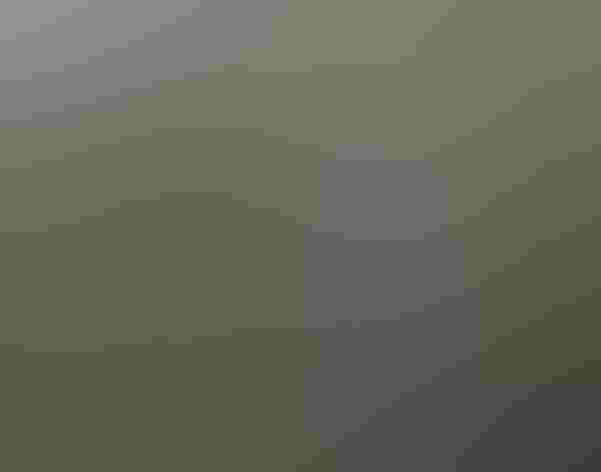Great Blue Heron
At a Glance
Widespread and familiar (though often called 'crane'), the Great Blue Heron is the largest heron in North America. Often seen standing silently along inland rivers or lakeshores, or flying high overhead, with slow wingbeats, its head hunched back onto its shoulders. Highly adaptable, it thrives around all kinds of waters from subtropical mangrove swamps to desert rivers to the coastline of southern Alaska. With its variable diet, it can spend the winter farther north than most herons, even in areas where most waters freeze.
All bird guide text and rangemaps adapted from Lives of North American Birds by Kenn Kaufman© 1996, used by permission of Houghton Mifflin Harcourt Publishing Company. All rights reserved.
Category
Herons, Egrets, Bitterns, Long-legged Waders
IUCN Status
Least Concern
Habitat
Coasts and Shorelines, Forests and Woodlands, Freshwater Wetlands, Lakes, Ponds, and Rivers, Saltwater Wetlands
Region
Alaska and The North, California, Eastern Canada, Florida, Great Lakes, Mid Atlantic, New England, Northwest, Plains, Rocky Mountains, Southeast, Southwest, Texas, Western Canada
Behavior
Direct Flight, Soaring
Population
700.000
Range & Identification
Migration & Range Maps
Northern populations east of the Rockies are migratory, some going to the Caribbean, Central America, or northern South America. Migrates by day or night, alone or in flocks. Some wander well to the north in late summer. Populations along the Pacific Coast may be permanent residents, even as far north as southeastern Alaska.
Description
Both sexes — Length: 3 ft 2 in–4 ft 6 in (1.0–1.4 m); wingspan: 5 ft 6 in–6 ft 7 in (1.7–2.0 m); weight: 4 lb 10 oz–5 lb 8 oz (2.1–2.5 kg). The Great Blue Heron is huge and gray, with a massive bill and a black crown stripe on a whitish head. Other grayish herons have a different head pattern; the Sandhill Crane has a different body shape. Two distinct forms of Great Blue are restricted to Florida: "Great White Heron" (all white with yellow bill, pale legs) and "Wurdemann's Heron" (white-headed), mainly in the Keys.
Size
About the size of a Heron
Color
Black, Blue, Gray, White, Yellow
Wing Shape
Broad, Fingered, Long, Pointed
Tail Shape
Short
Songs and Calls
A harsh squawk.
Call Pattern
Flat, Simple
Call Type
Croak/Quack, Scream
Habitat
Marshes, swamps, shores, tideflats. The Great Blue Heron is very adaptable, foraging in any calm, fresh waters or slow-moving rivers, and also in shallow coastal bays. Nests in trees or shrubs near water, sometimes on the ground in areas free of predators. "Great White" form is mostly in saltwater habitats.
Sign up for Audubon's newsletter to learn more about birds like the Great Blue Heron
Behavior
Eggs
3-5, sometimes 2-7. Pale blue. Incubation is by both sexes, 25-30 days.
Young
Both parents feed their young by regurgitation. Young Great Blue Herons are capable of flight at about 60 days, and depart the nest at about 65-90 days. 1 brood per year in the north, sometimes 2 in the south.
Feeding Behavior
Forages mostly by standing still or walking very slowly in shallow water, waiting for fish to swim near, then striking with a rapid thrust of the bill. The Great Blue Heron also forages on shore, from floating objects, and in grassland. May hunt by day or night.
Diet
Highly variable and adaptable. The Great Blue Heron eats mainly fish, but also frogs, salamanders, turtles, snakes, insects, rodents, and birds. Has been seen stalking voles and gophers in fields, capturing rails at the edge of marsh, and eating many species of small waterbirds.
Nesting
The Great Blue Heron breeds in colonies, often of this species alone, sometimes mixed with other wading birds; rarely in isolated pairs. The male chooses a nest site and displays there to attract a mate. Displays include stretching the neck up with the bill pointing skyward, flying in circles above the colony with the neck extended, stretching the neck forward with the head and neck feathers erected, and then snapping the bill shut. Nest: Site highly variable, usually in trees 20-60 ft above ground or water; sometimes in low shrubs, sometimes on ground (on predator-free islands), sometimes well above 100 ft in a tree. Nest (built mostly by females, with material gathered primarily by males) is a platform of sticks, sometimes quite large.
Conservation
Conservation Status
Formerly, it was often shot simply because it made a conspicuous and easy target, but this rarely occurs today. Colonies of Great Blue Herons may be disrupted by human disturbance, especially early in the season. Still common and widespread, numbers probably stable.
Climate Threats Facing the Great Blue Heron
Choose a temperature scenario below to see which threats will affect this species as warming increases. The same climate change-driven threats that put birds at risk will affect other wildlife and people, too.





















